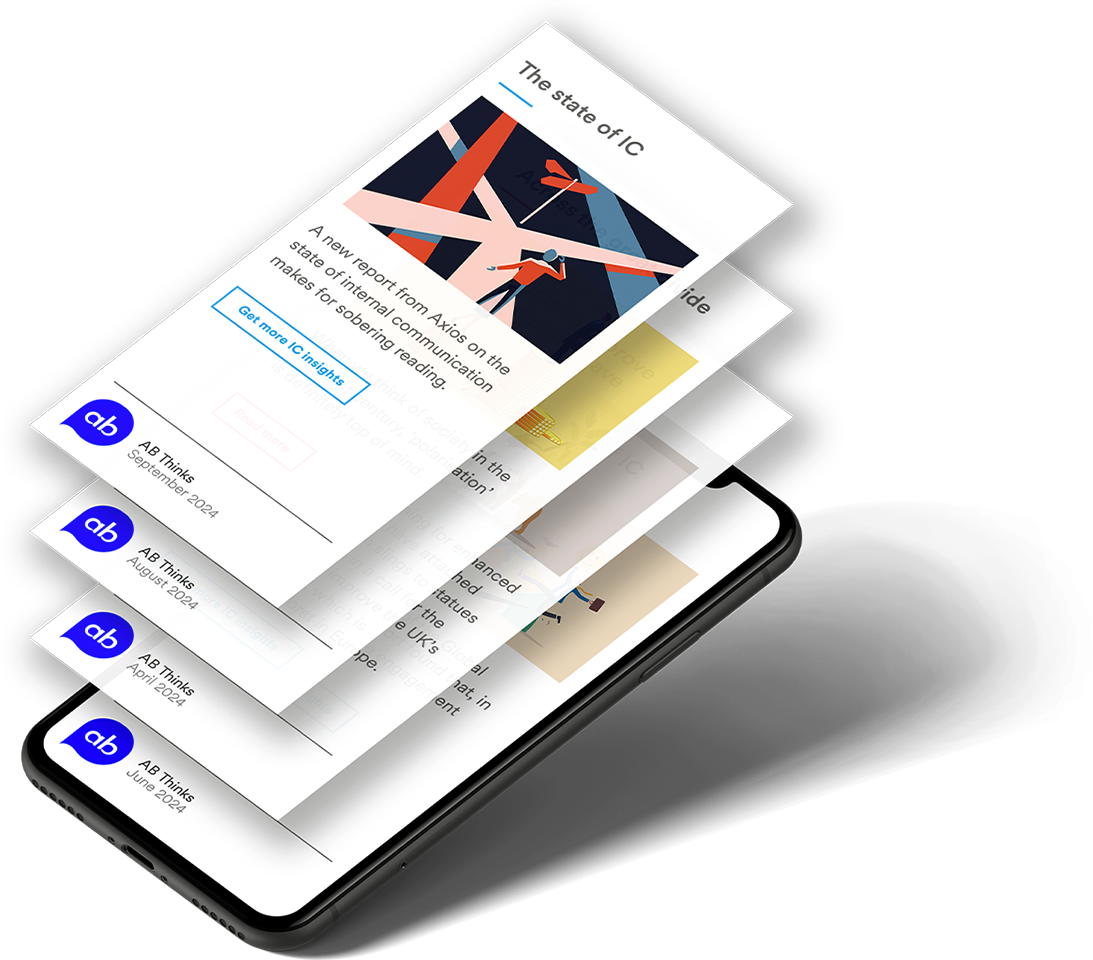Our guest for Episode 45 of The Internal Comms Podcast, Mark Webb is a public speaker, campaigner and fundraiser who hates to be called ‘inspirational’.
The current Head of Comms at multiple sclerosis charity Shift.ms, Mark cut his teeth in public relations at Disneyland Paris before becoming Head of Communications at David Lloyd Leisure and then Head of Media Relations at Dixons Carphone.
After his pioneering use of social media at Dixons earned then-CEO Sebastian James the highest Twitter following of any FTSE 100 CEO, Mark was suddenly given some life-changing news: an MS diagnosis.
In part thanks to his flexible and generous employers, Mark continued to work a 4-day week at Dixons for some time. The now wheelchair-bound triathlete eventually turned his considerable energy to helping run Shift.ms, a charity which doubles as a ground-breaking social network for people with MS.
Here are our top five takeaways from a memorable hour-long collection of thoughts and anecdotes from a true comms pioneer.
#1 – Take a leaf out of Disney’s book and make your employees feel part of something special
At Disney, senior management were very visible, very hands on, very involved, and very excited by the same rollercoasters, parades and fireworks that I was. They let us be part of it. My favourite Disney film is Beauty and the Beast, because they let us see it a couple of weeks before release, which really built excitement around it. Not everybody can have castles, fireworks and A-list celebrities, but there must surely be, with any company, times that you could share something with your employees. Not just discounts, but time with senior management, product launches, sneaky news coming out. It’s just that kind of ‘you’re part of the team, we’re in this together, so come and be part of the magic’.
#2 – A crisis is IC’s time to shine
At Dixon’s retail, we saw off the 2008 downturn and merged with Carphone Warehouse to become Dixon’s Carphone: that’s two huge events to cope with and to enjoy. I’ve always loved a crisis. I’ve always loved things falling apart, because, if you do it well, you’re really in the room with the most senior of management, and they’re often flapping. You’re the calm one at the centre of the storm, telling them to take a breath, telling them to step back, giving them guidance. I think that’s where we earn our bucks: the crisis and the issue management.
#3 – Get senior managers to use their real voices
I would encourage any senior leader to be active on social media – there are stats which show how much more trusted companies are when they see company leaders on social media – but I would discourage leaders from having someone tweet for them. At Dixons Carphone, I would often talk to our CEO Seb James about what he might tweet, but he would always put them in his own tone of voice, which is very eloquent, witty and humble. Having his tweets alongside my tweets and our corporate Twitter account on things like results days, allows you to put out the official ‘happy to report X percent up’, plus versions from me and from Seb. Newspapers would actually pick them all up and put those tweets on their front cover. That gave us another little tweak of an angle on the things that we would like to be reported, and other bits that we’d like to be ignored. It was a wonderful way of adding to our communications channels.
#4 – Don’t forget disability when you talk about diversity and inclusion (D&I)
On days when I’m not feeling on best form, I have been known to turn into a bit of a keyboard warrior and track down all these companies that are announcing their diversity strategies for the next five years. There’s some really good stuff happening in D&I, but there’s also some tickbox stuff going on. I’m very aware of that. Sometimes I feel bad for calling comms people out when they announce their groundbreaking strategy, and on their seven-page document there’s not a single mention of disability. I tweet back at them and it all goes silent for 24 hours, and I know that there’s a comms huddle going on and I’ve caused it. It would be very handy for the comms industry and senior management to accept that we exist as a community, even if sometimes we don’t identify as a community. One in five of us are disabled, but a lot of those people don’t recognise themselves as disabled. From the day I was diagnosed, I was officially disabled, but it wasn’t until two or three years later, when I was in Costa and knew I wouldn’t be able to carry my coffee back to the table without spilling it, that I said it aloud for the first time. ‘Do you mind carrying my coffee? I’m slightly disabled.’ So we could help ourselves by being becoming a more coherent group.
#5 – Comms is finally a career!
I wish I had known that communications was a career. When I launched into PR in the early to mid ’90s, it really wasn’t seen as a career. I used to say that PR and HR are the two careers you go into if you don’t know what you’re going to do, and essentially that was how I ended up in it – I just happen to have fallen in love with it when I got there. It wasn’t really a career option, but it’s turned out to be that way for me. I’m so glad that there’s degrees out there now and apprenticeships, and it’s a growing and accepted phrase. I see lots of journalists moving to the PR side and that always makes me laugh. It’s fine, because that wouldn’t have changed my career path, but it’s wonderful that comms is now an important and growing profession.



